A Draw
The Game ends in a draw in the following cases:
Stalemate Position
When a player has to move and he can’t make any legal move with his King or with a piece other than the King, it is said that a STALEMATE POSITION has been reached. In this case the result of the game will be a Draw
Black to play in the following examples:
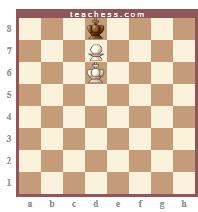 | 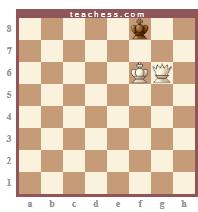 |
| 1. … ? = The King is in Stalemate Position |
1. … ? = The King is in Stalemate Position |
Perpetual Check
This situation leads to a Draw. Perpetual Check may be defined as an indeterminable sequence of checks. It is generally used in a very difficult situation by the weaker side, which may be:
- A great disadvantage of material
- An enemy Mating attack. (unstoppable Mate )
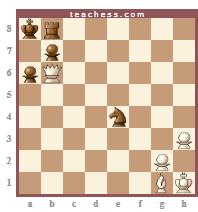 |
1. … ? = |
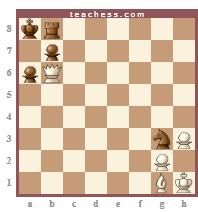 |
1. … Ng3+ In face of the serious threat against his King, Black can only Check. |
 |
2. Kh2 (only move) |
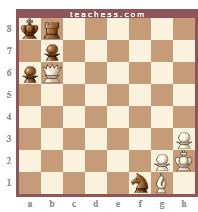 |
2. … Nf1+ There is no better exit than checking. |
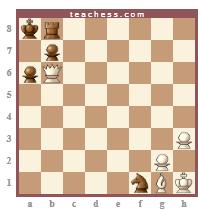 |
3. Kh1(only move) If now 3... Ng3+ a previous situation is reached and a Repetition of the Position is produced |
Repeating a Position
If the same position is repeated 3 times, the player can claim a Draw in his turn. The following requisites must be met in this case:
Three photographically identical positions: This implies not to have to distinguish between both Knights or both Rooks, because they can exchange their respective positions.
Potentially equal Positions: The possibility of castling or of capturing “en passant” are circumstances that have to be taken into account. Positions where these possibilities exist are disregarded.
In each position it has to be the same side’s turn: If the side’s turn has change, it is not considered an identical position.
50 Moves’ Rule
If 50 moves are made (a move in chess implies a move by the White Pieces and its corresponding answer by the Black ones) without capturing a Piece or moving a Pawn, the game can be declared a Draw at one of the players’ request.
Insufficient Pieces
When a side has not enough pieces to checkmate, his rival can claim for a Draw.
A minor piece: Bishop or Knight
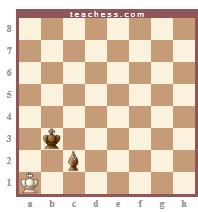 | 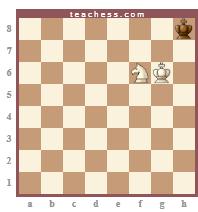 |
In both cases we can see that the Stalemate Position has been reached, with the consequent Draw of the game .In fact, to build any possible position in which a Checkmate may be given is impossible with this material balance. The Lone King always escapes or is subject to Stalemate
Two Knights
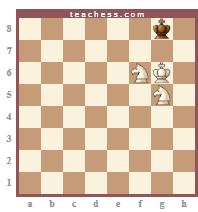 |
This position is considered a Draw, because being the most |
But a careless move like 1...Kh8?? would be tragic because in this case the weak King would be given Checkmate with 2. Nf7++
Thus, it is said that the situation of two Knights is technically a Draw.
By Agreement of the Parties
If both players agree to a draw, the game can be declared a Draw.